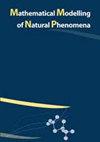Quantifying the effects of non-pharmaceutical and pharmaceutical interventions against COVID-19 epidemic in the Republic of Korea: Mathematical model-based approach considering age groups and the Delta variant
IF 2.1
4区 数学
Q2 MATHEMATICAL & COMPUTATIONAL BIOLOGY
引用次数: 5
Abstract
Background: Early vaccination efforts and non-pharmaceutical interventions were insufficient to prevent a surge of coronavirus disease 2019 (COVID-19) cases triggered by the Delta variant. This study aims to understand how vaccination and variants contribute to the spread of COVID-19 so that appropriate measures are implemented. Methods: A compartment model that includes age, vaccination, and infection with the Delta or non-Delta variants was developed. We estimated the transmission rates using maximum likelihood estimation and phase-dependent reduction effect of non-pharmaceutical interventions (NPIs) according to government policies from 26 February to 8 October 2021. We extended our model simulation until 31 December considering the initiation of eased NPIs. Furthermore, we also performed simulations to examine the effect of NPIs, arrival timing of Delta variant, and speed of vaccine administration. Results: The estimated transmission rate matrices show distinct pattern, with the transmission rates of younger age groups (0~39 years) much larger than non-Delta. Social distancing (SD) level 2 and SD4 in Korea were associated with transmission reduction factors of 0.64 to 0.69 and 0.70 to 0.78, respectively. The easing of NPIs to a level comparable to SD2 should be initiated not earlier than 16 October to keep the number of severe cases below the capacity of Korean healthcare system. Simulation results also showed that a surge prompted by the spread of the Delta variant can be prevented if the number of people vaccinated daily was larger. Conclusions: Simulations showed that the timing of easing and intensity of NPIs, vaccination speed, and screening measures are key factors in preventing another epidemic wave.量化大韩民国非药物和药物干预措施对COVID-19流行病的影响:考虑年龄组和Delta变体的基于数学模型的方法
背景:早期疫苗接种工作和非药物干预措施不足以预防由Delta变异引发的2019冠状病毒病(COVID-19)病例激增。本研究旨在了解疫苗接种和变异如何促进COVID-19的传播,以便实施适当的措施。方法:建立了一个室室模型,包括年龄、疫苗接种和感染Delta或非Delta变异。我们根据2021年2月26日至10月8日的政府政策,使用最大似然估计和非药物干预措施的阶段性减少效应来估计传播率。考虑到缓和的npi的开始,我们将模型模拟延长至12月31日。此外,我们还进行了模拟,以检验npi的影响、Delta变体的到达时间和疫苗施用速度。结果:低年龄组(0~39岁)的传播率明显高于非三角洲年龄组。韩国的社会距离(SD)等级2和SD4的传播减少系数分别为0.64 ~ 0.69和0.70 ~ 0.78。应不早于10月16日开始将国家预防措施放宽到与SD2相当的水平,以使严重病例数量低于韩国卫生保健系统的能力。模拟结果还显示,如果每天接种疫苗的人数更多,则可以防止由Delta变体传播引起的激增。结论:模拟结果表明,npi缓解的时机和强度、疫苗接种速度和筛查措施是预防另一波疫情的关键因素。
本文章由计算机程序翻译,如有差异,请以英文原文为准。
求助全文
约1分钟内获得全文
求助全文
来源期刊

Mathematical Modelling of Natural Phenomena
MATHEMATICAL & COMPUTATIONAL BIOLOGY-MATHEMATICS, INTERDISCIPLINARY APPLICATIONS
CiteScore
5.20
自引率
0.00%
发文量
46
审稿时长
6-12 weeks
期刊介绍:
The Mathematical Modelling of Natural Phenomena (MMNP) is an international research journal, which publishes top-level original and review papers, short communications and proceedings on mathematical modelling in biology, medicine, chemistry, physics, and other areas. The scope of the journal is devoted to mathematical modelling with sufficiently advanced model, and the works studying mainly the existence and stability of stationary points of ODE systems are not considered. The scope of the journal also includes applied mathematics and mathematical analysis in the context of its applications to the real world problems. The journal is essentially functioning on the basis of topical issues representing active areas of research. Each topical issue has its own editorial board. The authors are invited to submit papers to the announced issues or to suggest new issues.
Journal publishes research articles and reviews within the whole field of mathematical modelling, and it will continue to provide information on the latest trends and developments in this ever-expanding subject.
 求助内容:
求助内容: 应助结果提醒方式:
应助结果提醒方式:


